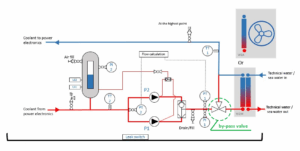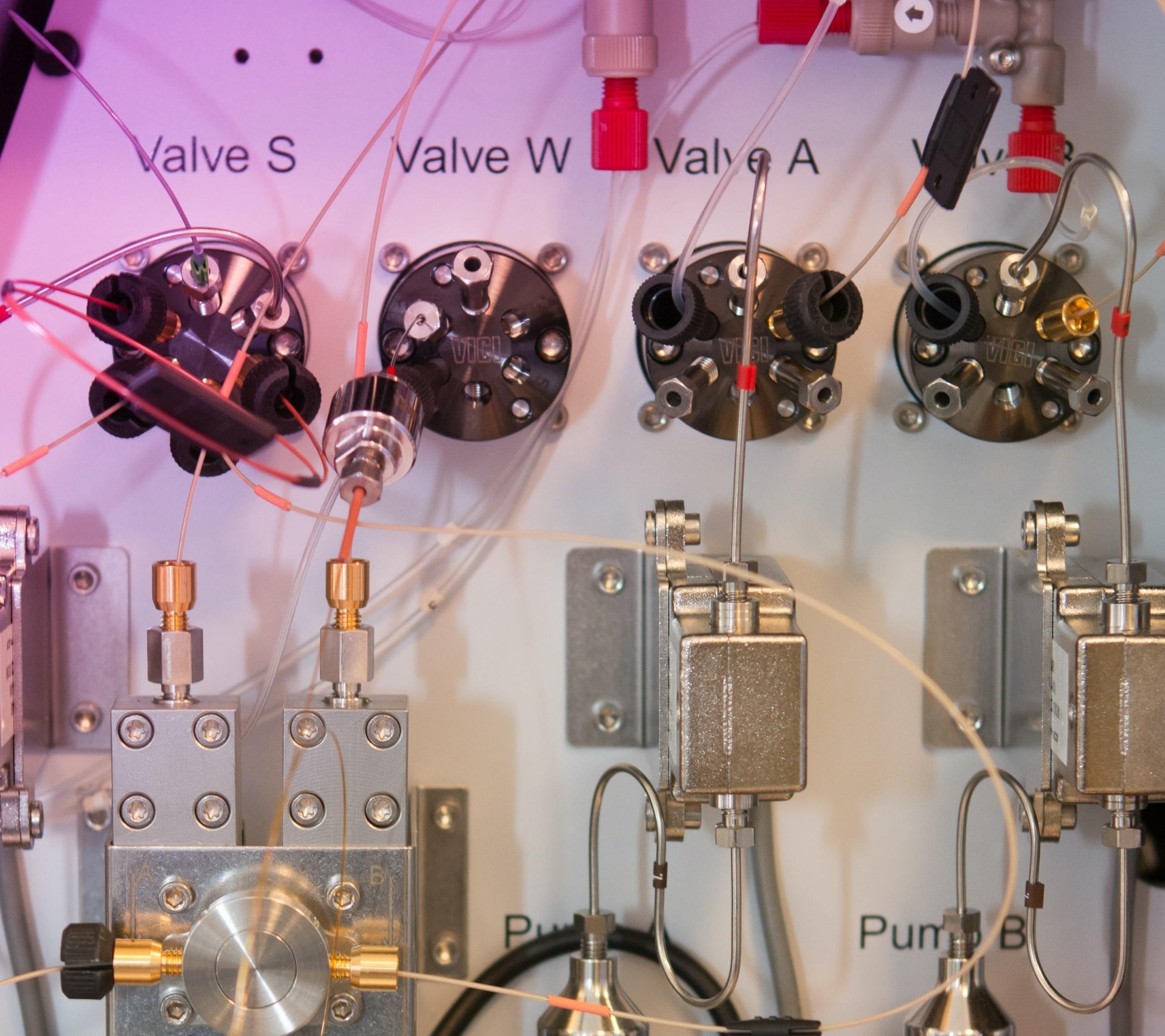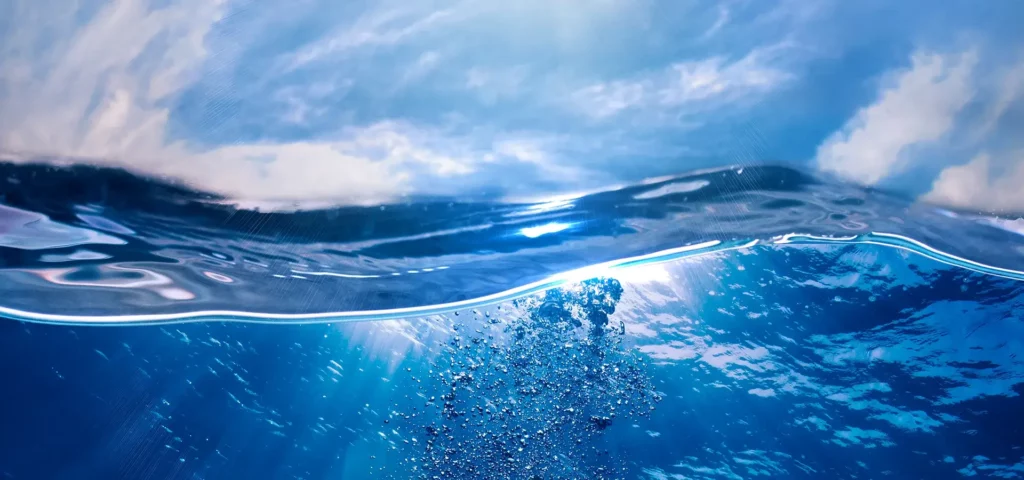The basic operating principle in the water-cooling system is simple:
- A hot object – for example power electronics – needs to be cooled. Heat sinks transfer the heat from the hot object. The heat is transferred to water flowing through the heat sink.
- The heat transfer to water is possible when the water temperature is lower than the temperature of the heat sink.
- The higher the temperature difference between the water and the heat sink, the more efficient is the cooling
- The higher the flow of the water, the more efficient is the cooling (assuming that the water temperature is still lower than the temperature of the heat sink)
- After leaving the hot object the heated water is led to a device called “a heat exchanger”. In the heat exchanger the water is cooled. There are two alternatives to do this.
- In a water-to-water heat-exchange water is cooled with water: there is another water circuit with cold water that will cool down the hot water circuit. The water circuits are separate from each other and don’t directly mix.
- In a water-to-air heat-exchanger water is cooled with air: there are fans that blow air to hot water circuit to cool it down.
The water-cooling system as described above sounds very simple. In real life the total system has some variables that are not fixed: the heat loss from the object may change, the object to be cooled may have certain minimum and maximum allowed operating temperatures, the available cold-water temperature may vary, and the environment temperature may vary as well.
The water-cooling systems needs to be operated taking these parameters into consideration. There are two ways to do this.
- The first possibility is to use a variable frequency drive (VFD) and with this adjust the flow in the system to produce the required cooling output. This method, however, will not always work: the system pressure limitations may cause a problem, or the water temperature may not be suitable for cooling. This may also be a rather costly method.
- The second possibility is to use a by-pass valve. The by-pass valve regulates the mix of water that flows to the hot object. One part of the mix is the heated water that comes from the heat source and the other part is the cooled water that comes from the heat exchanger. If the heat source is very hot, most of the water is circulated through the heat exchanger. On the other hand, if it is very cold outside or the technical water is cold, only fraction of the cold water is needed in the mix.

Picture 1. Process diagram
There are two versions of by-pass valves that are used in Adwatec systems: mechanical and thermostat by-pass valves.
- When using a mechanical by-pass valve controlling and operating the process is easy. Only the temperature values of a coolant flowing to and from the heat source are needed. Based on these temperature values a PLC logic defines the correct position of the by-pass valve. The actual operation of the valve is done with an electric motor actuator.
- A thermostat type by-pass valve is even easier to operate! In this version the by-pass valve material volume changes with water temperature. The volume change practically opens and closes the valve and regulates the flowmix “automatically”. The challenge with this by-pass version is, that the thermostat valve needs to be selected exactly for the required temperature range.
In Adwatec water cooling systems we have both by-pass valve options available. We also deliver variable frequency drives for temperature control if needed.
If you have any issues or questions regarding by-pass valves or any other water-cooling system related topics, please contact Adwatec Oy sales!
Learn more about Adwatec water cooling solutions
WORDS: Heikki Mustonen, Managing Director, Adwatec Oy
+358 50 477 8685
heikki.mustonen@adwatec.com




